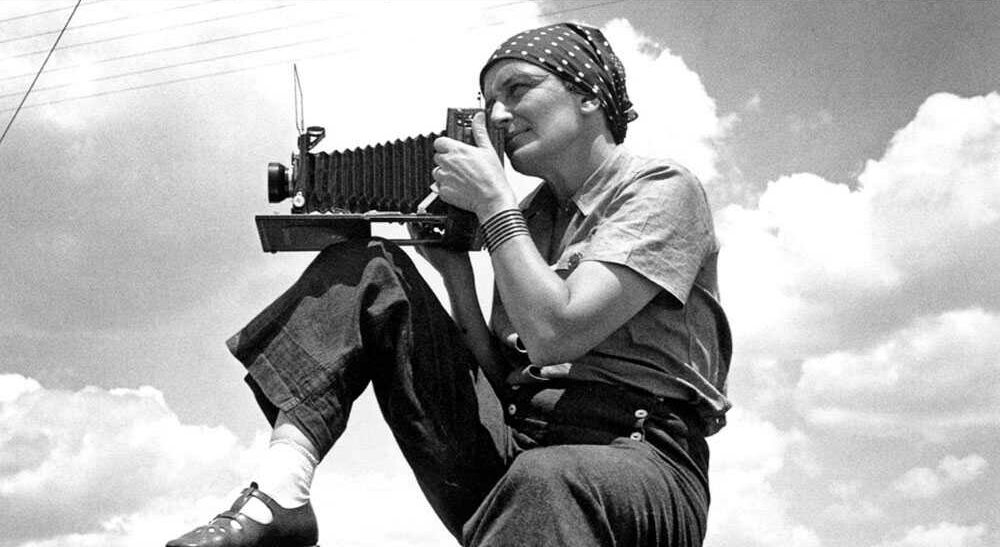Beacons of Hope: Our Interreligious S/Heroes Beacon of Hope: Our Interreligious S/Heroes — Dorothea Lange

 Every month, the Miller Center for Interreligious Learning & Leadership of Hebrew College honors an individual (or group) who inspires our bridge-building efforts. Each honoree uniquely embodies the values of inclusivity, justice, and compassion. Dorothea Lange, the famous Depression-era photographer and photojournalist, is our Beacon of Hope for the month of September. This nominee was submitted by Roman R. Williams, Ph.D., founder of Interfaith Photovoice.
Every month, the Miller Center for Interreligious Learning & Leadership of Hebrew College honors an individual (or group) who inspires our bridge-building efforts. Each honoree uniquely embodies the values of inclusivity, justice, and compassion. Dorothea Lange, the famous Depression-era photographer and photojournalist, is our Beacon of Hope for the month of September. This nominee was submitted by Roman R. Williams, Ph.D., founder of Interfaith Photovoice.
Dorothea Lange, arguably one of the most famous photographers in US history, was not a religious person as far as I know. At least, she wasn’t a publicly religious person. But she inspires my own interreligious work through the way she wielded her camera, saw embodied stories within human faces, and used her photos to instigate social change.
 Even if the name doesn’t ring any bells, you know the work of Lange. Her “Migrant Mother” (pictured) is one of the most recognizable photographs ever taken. Taken in Nipomo, California at the height of the Great Depression, the “Migrant Mother” is an exemplar of Lange’s typical dignified approach to photographing the poor, the outsiders, those often depicted without dignity. For Lange, our photographs tell us something about how we see the world. She taught that “the camera is an instrument that teaches people how to see without a camera.”
Even if the name doesn’t ring any bells, you know the work of Lange. Her “Migrant Mother” (pictured) is one of the most recognizable photographs ever taken. Taken in Nipomo, California at the height of the Great Depression, the “Migrant Mother” is an exemplar of Lange’s typical dignified approach to photographing the poor, the outsiders, those often depicted without dignity. For Lange, our photographs tell us something about how we see the world. She taught that “the camera is an instrument that teaches people how to see without a camera.”
Dorothea Lange helped teach me how to see others with dignity, respect, and empathy. She also inspired me to think about how photos are not captured; they are made. How we represent people, as photographers, matters profoundly. And in a world so filled with hate, antipathy, and neutrality, the photographs and stories of religious and ethnic minorities that have dominated American public consciousness have been less than flattering ones. These photos train us to see these people through lenses filtered by stereotypes. Lange challenges us to see differently.
My own approach to interfaith engagement begins by taking Lange seriously. Shortly after the 2016 Presidential election, I was disturbed by the newly elected American president’s rhetoric directed at immigrants and people with different colored skin than myself. With the rise and return of Islamophobia, anti-Semitism, and white supremacy, I felt called—in part out of my own religious convictions as a Protestant Christian—to do something to contribute to pluralistic flourishing. As I thought about what I, a visual sociologist with a focus on lived religion, could do to help the people most affected by targeted hatred, the way of seeing Lange represents weighed on my mind.
And that’s where Interfaith Photovoice enters the picture. But…what is that? Photovoice is a tool from sociology that uses photos to give voice to people and issues in a community—and, as a result, there is an activist edge to photovoice, where empowerment and action have always been foundational. The point is to actually make a difference.
In 2017, along with a dear friend, Rev. Michael Bos, I founded IFPV to use photovoice to strengthen ties and pursue change among members of different religious affiliations living in the same local communities. Our approach brings together people with different backgrounds to photograph and reflect on topics related to their faith in everyday life, the challenges they face, and what a better world looks like. Together they build understanding, empathy, and a shared sense of purpose through a series of facilitated conversations. Projects typically culminate in a public art exhibition. Thomas, a Christian, might learn from their photos and group discussion that his new friends Muhammad and Zeynep feel unsafe in a certain part of town because of their skin colors or the visual symbols that communicate their religious heritage. Extending from photovoice’s activist edge, we would invite the people who need to hear the stories behind these photos to the opening of the exhibit: the police chief, shop owners in that part of town, religious leaders, etc… The point is to actually make a difference in the community.
To make a real, tangible, and lasting impact on our communities, we first have to listen to and try to understand one another’s stories.
Roman R. Williams, Ph.D., directs Interfaith Photovoice. He combines sociology, photography, and participatory research to build interfaith and intergroup understanding. Roman is a research fellow at the Kaufman Interfaith Institute (Grand Valley State University).

